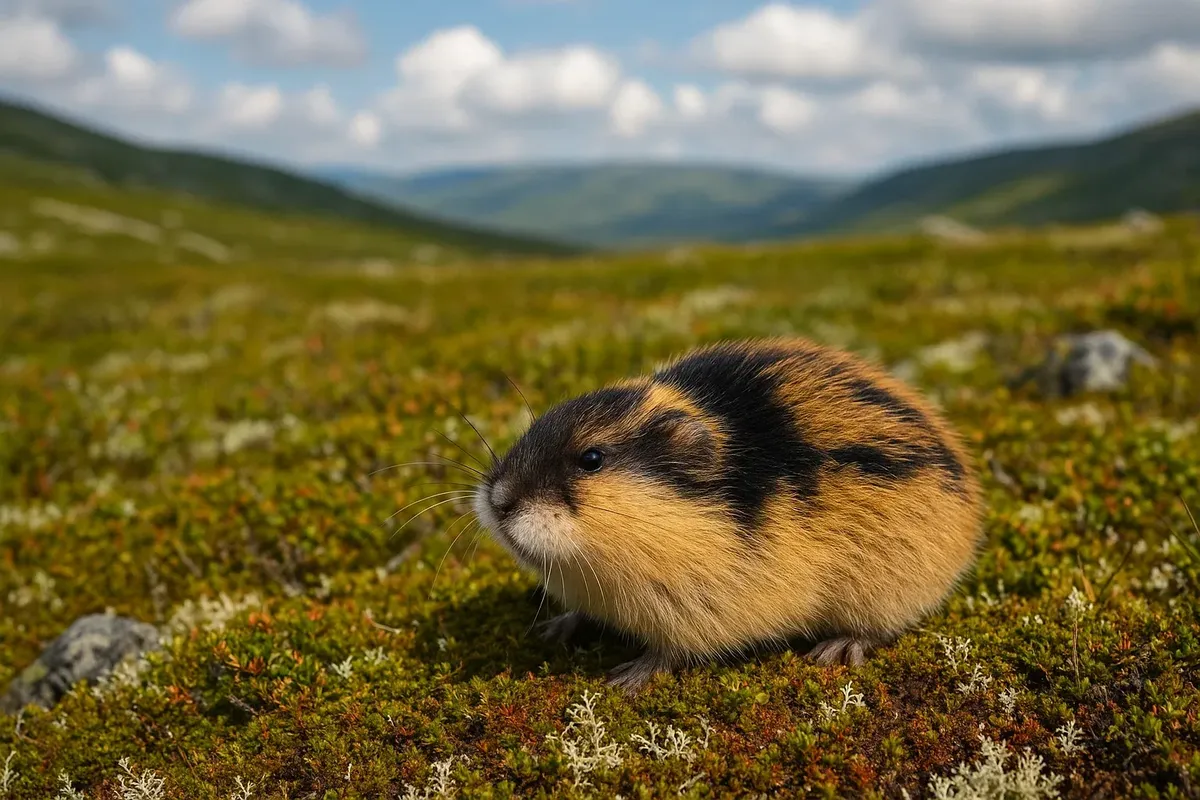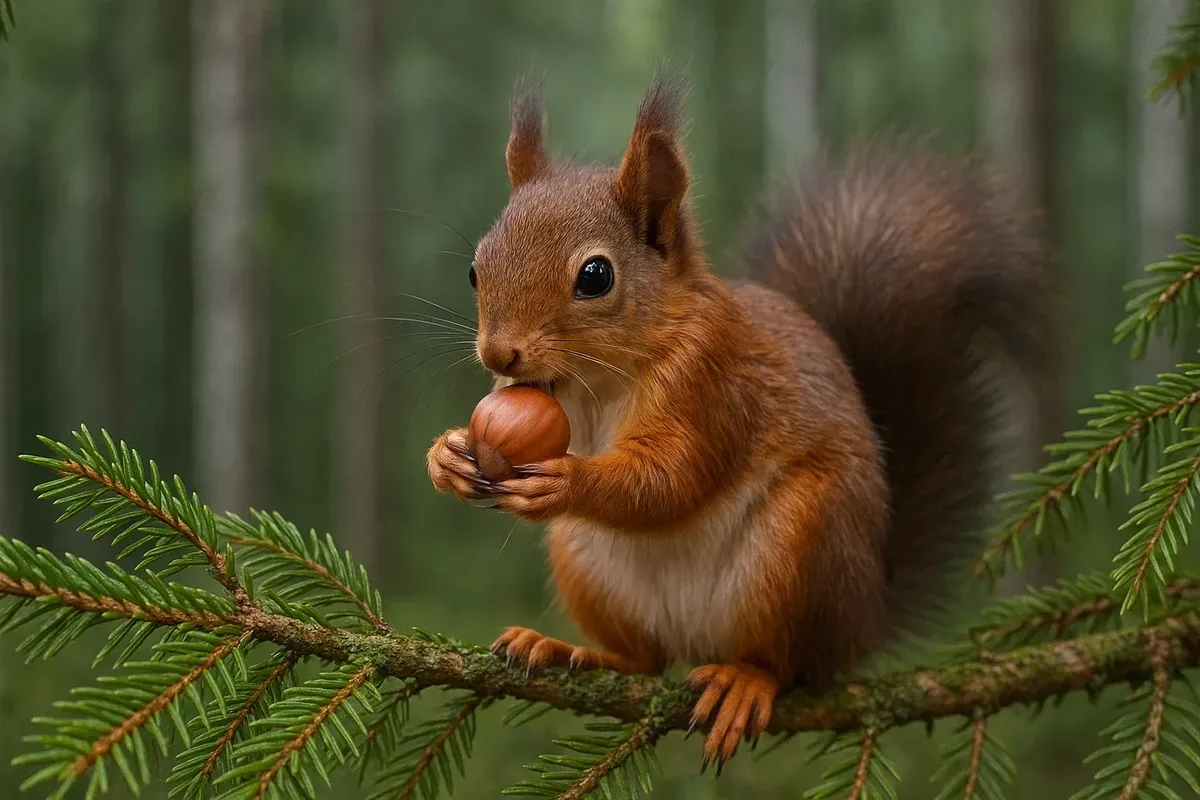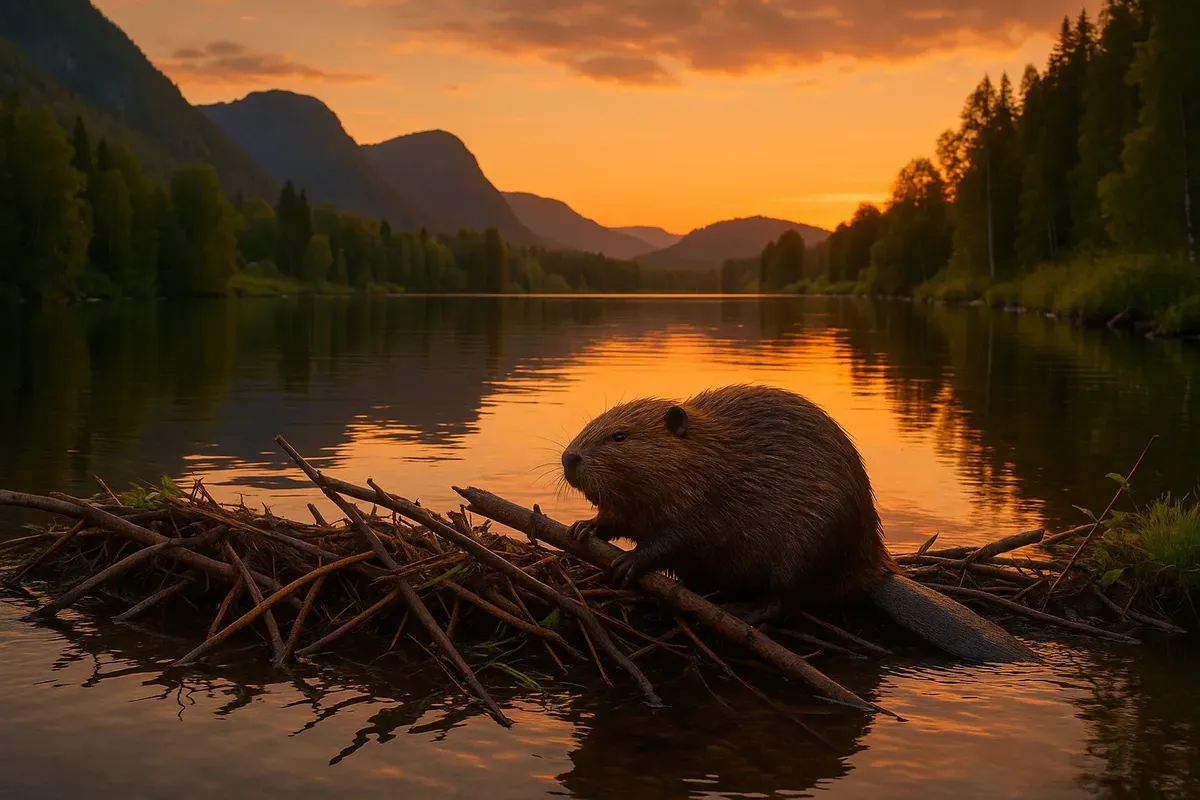🖼️ Norway's miniature world: rodents that make the ecosystem unique
📚 Why read?
- Find out why small animals are important "builders" of northern landscapes.
- Meet lemmings, beavers, squirrels and their "neighbors".
- Get tips on where and when you can see these little ones in the wild.

| Species | Where They Live | How They Enrich Nature |
|---|---|---|
| Norwegian lemming | Mountain plateaus of Finnmark, Hardangervidda | Reshapes plant cover; fast food for owls, arctic foxes, and golden eagles |
| Red squirrel | Coniferous and mixed forests across the country | Spreads conifer seeds, buries nuts that later grow into trees |
| Beaver | Rivers in Telemark, Hedmark, Trøndelag | Builds dams that create fresh wetlands for ducks and amphibians |
| Bank vole | Meadows and woodland edges in the south | Controls grass growth; vital prey for owls and foxes |
| House mouse (wild) | Farms and sheds along the western fjords | Cleans up spilled grain and insects; feeds martens and owls |

🌱 Why would the ecosystem collapse without them?
- Let's think about what our predators would have to eat!
Did you know that 70% of the diet of our friends the Arctic foxes and golden eagles in the tundra consists of lemmings or voles? The great news is that by reducing the number of rodents, we can also help to protect our birds of prey.
- Water engineers
Our fluffy-tailed friends, the beavers, are the reason why the water levels in our beautiful streams and rivers are a little higher than usual. Their lovely homes along the waterways provide a cosy place for tadpoles, dragonflies and ducks to call home.
- Reforesters
It's so funny how squirrels hide nuts and sometimes forget where they've put them! That's how those little pine and spruce trees look, all scrunched up and hidden.
- Just a heads-up: it's time to aerate the soil!
Mouse burrows are great for the soil, helping to aerate it and speed up the process of decomposition, which is really important for creating humus.

| Region | Best Time | What to Bring |
|---|---|---|
| Finnmark, Vidda Plateau | July–August (lemming peak) | 8×32 binoculars, waterproof boots |
| Glomma and Lågen Rivers | May–September | Silent kayak, camouflage jacket — beavers are sensitive |
| Oslo parks (Bygdøy, Nordmarka) | Year-round | A handful of unsalted nuts — helps lure squirrels for a photo |
| Helgeland meadows | June | Tripod and macro lens — voles often freeze for a few seconds |
I've got some awesome photo life hacks for you!
- Why not try shooting at dusk? That's when the little critters are really active, and the light is soft and beautiful.
- Just a friendly reminder to use continuous shooting mode when you're out and about, because let's face it, red squirrels can be a bit unpredictable!
- To really make your animal look big and impressive, try placing the camera low down, at the same level as the grass. This will make it look super stable and your pet will look huge!
Just a friendly reminder of the rules of ethics!
- Please don't feed lemmings or voles, as they can quickly become used to people and lose their usual careful behaviour.
- When you're out and about photographing beavers, it's always best to keep a safe distance of 30+ metres. If you see a beaver's tail slap into the water, that's a sign that they're feeling a bit alarmed.
- Please, please don't touch empty squirrel nests, as there might be babies sleeping there.
Rodents are the unsung heroes of Norwegian nature, aren't they? They build dams, sow forests, feed predators and even change river courses. Go out and explore the beautiful northern landscapes with a pair of binoculars and you'll see how these little creatures bring them to life! If we all keep our distance and show respect for their rhythm, we can help to protect and preserve the balance of the entire ecosystem.





1 comment
Log in to leave a comment
Hvilket smådyr er dere mest fascinert av i Norge, og hvorfor? 🌱